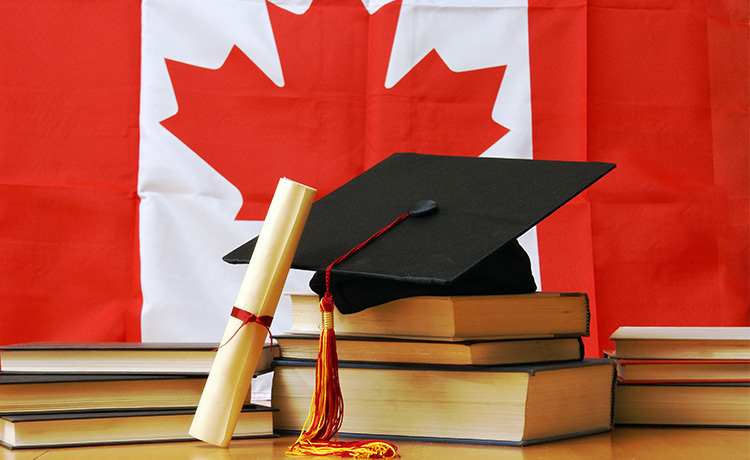



STUDENT VISA - TOURIST VISA
: 98552-36041, 99140-24043
: 0183-5061957
: support@wasuoverseas.com

With its range of landscapes, glacial peaks, ice fields, green vegetation and massive mountains, there is a long list of Canadian scenic wonders for students to sight see while studying in the country. Most visited tourist spots at a quick glance are the Niagara Falls, the 135 km long Okanagan Lake with its Ogopogo lake monster, the Glacier National Park, the Banff National Park and the Canadian Rockies, to name a few.
The higher education system in Canada is not very different from the American education system, with a little influence from Britain.

There are mainly three types of institutions:
Public Universities: Public universities in Canada are run by the provincial, territorial or federal government funding besides receiving the tuition fees from students.
Private Universities: Private universities in Canada are mostly funded by donations and research grants. These universities do not receive funding from the government bodies.
Liberal Arts Colleges: Liberal arts colleges in Canada are pretty similar to that in the USA. These are either public or private colleges, with a primary emphasis on undergraduate courses in liberal arts.
From natural peaks to skyscrapers, Canada has it all! Montreal and Toronto are two large cities that offer just about everything students could possibly ask for.
Toronto, an ethnically diverse city is also a major centre of higher learning and research with many well-known institutions such as the University of Toronto.
The City of Saints, Montréal, is one that defies all expectation with its lush mix of North American & European swagger and cutting-edge culture. The United Nations consistently ranks Canada as one of the best places in the world to live, given its low crime rate. There are also walksafe programmes, where volunteers assist people in getting to public transportation or their homes during late hours at night.
There are three academic intakes at the institutions in Canada: fall, winter and summer. Fall lasts from September to December, winter lasts from January to April and summer lasts from May to August. Though fall is the primary intake in most colleges, some colleges do offer a winter intake.
International students are advised to apply at the earliest, as scholarships and admissions get more and more competitive closer to the deadline. A typical application deadline would be 6 to 9 months before your session starts, and it can vary depending on each department and the subject of choice. Though deadlines are not flexible, except for diploma programmes, some institutions might accept students if seats are available.

Students can choose from a number of study programmes –
Some popular courses at the undergraduate level are engineering and administrative studies and at the postgraduate level are management, finance, MBA/MIM, MS and LLB degrees.
The price tag for higher studies in Canada is roughly half compared with other leading study destinations. Tuition fees vary from institution to institution. On average, students will have to shell out CAD 10,000–40,000 per year.
Annual living expenses will depend on the living location you prefer and the type of accommodation that suits you, i.e., private, homestay or on-campus accommodation. On average, students pay CAD 6,000–8,000 per year for their accommodation. Of course, the transport and other expenses should be factored in. And one more thing that you can’t avoid is a health insurance that costs CAD 600 (approx.) per year.
International students can work part time for 20 hours per week. Some universities with more intensive courses allow their students to work for nearly 12 hours since working for more hours can affect their students' performance.
International students can apply for work permit post their studies, which gives them the opportunity to work in the country for a three-year period.
